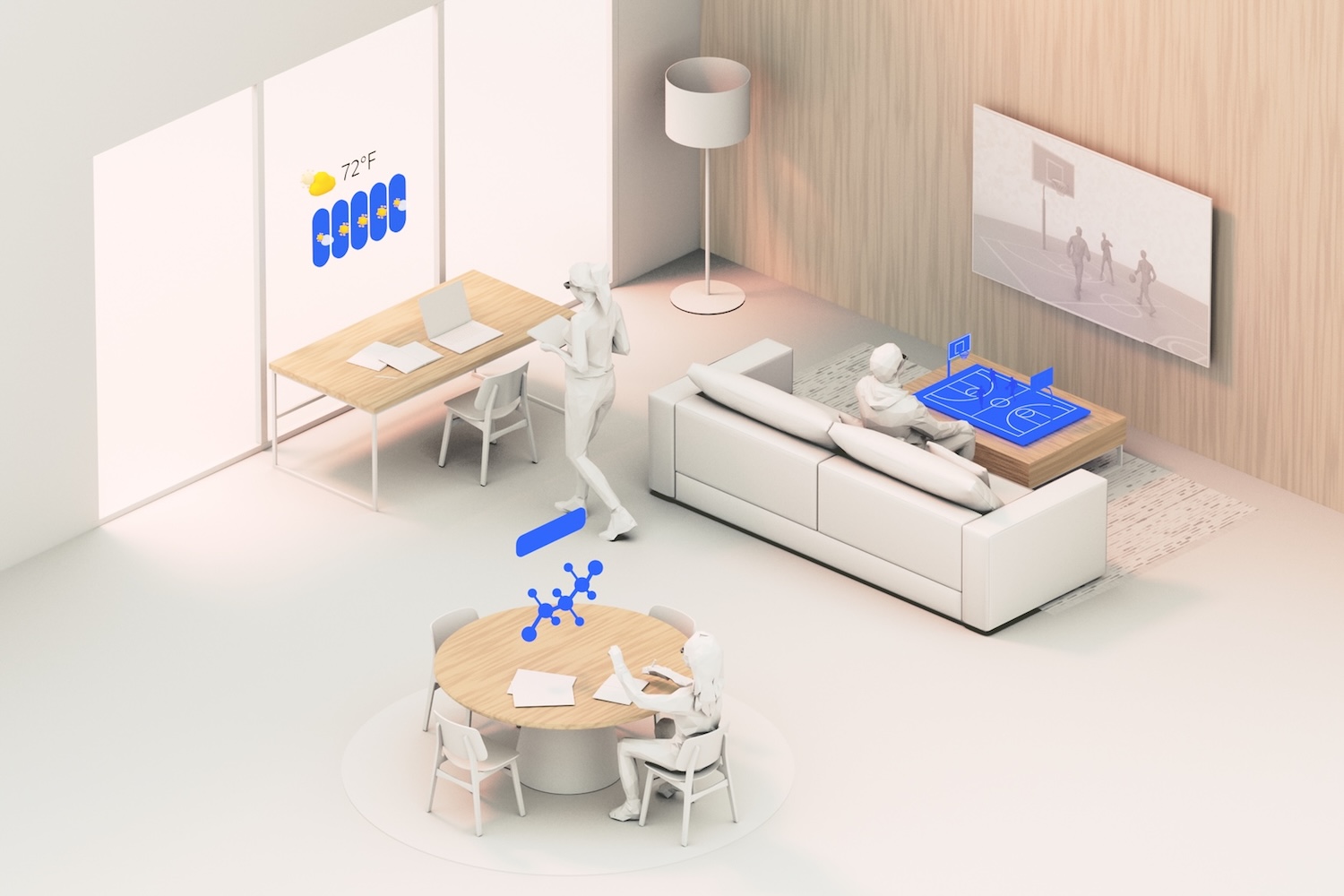Technology has the power to pull us out of the present moment, but at Magic Leap, we believe that the most important moments of our lives happen in the physical world, together with other people. Optical see-through technology can maintain and enhance your physical surroundings, rather than detract from them. For us, “immersion” isn’t about taking you out of your world, it’s about connecting you closer to it.
Augmented Reality (AR) layers digital content onto the physical world — when done well the best AR experiences enhance what’s already there. Thoughtful design can ensure your AR experience supports, rather than interrupts, the user’s interactions with the world.
So how do you build something that adds to reality without getting in the way? These best practices will help your designs stay grounded in the user’s physical reality.
Maintain Situational Awareness
For the most part, we move through the physical world subconsciously. We adjust our steps to match the pace of a crowd, avoid obstacles without looking down, and otherwise react to changes in our environment without a second thought. We can create a safe and comfortable AR experience by respecting that natural flow.
Physical elements like floors, walls, and furniture should remain visible — no one should trip over a coffee table because of floating digital content. And if there are people, animals, or vehicles nearby, the AR content should respond accordingly to prioritize the physical world. For example, when someone approaches you and starts speaking the digital content could fade to help you prioritize your focus. And object detection can prevent content from layering over moving vehicles or other hazards.
It’s also worth considering the broader environment. Is there background noise that could make user voice commands unreliable? Are the user’s hands busy with something like cooking or woodworking? These situations present opportunities to adapt designs to the user and their environment for a fluid experience.
Acknowledge Boundaries
Preserving situational awareness in AR experiences helps users stay safe. But to make them comfortable, it’s important to acknowledge and integrate natural boundaries into your designs. The physical world has well-defined limits — every space has boundaries — walls define rooms, furniture shapes how we move, doors and windows mark transitions. Those boundaries help anchor our perception within the space and AR should respect and build upon them. Thoughtful placement of digital content in physical spaces is key to creating immersive and comfortable AR experiences.
Flooding the user’s entire field of view with digital content risks obscuring critical physical-world cues and breaking the sense of presence. Just as jarring is when AR content drifts beyond walls or floats in impossible spaces. Whenever possible, keep digital elements anchored within the room’s physical boundaries. If they must extend beyond, include clear visual indicators to signal the transition.
Boundaries make AR more appealing, providing users with better experiences. Respecting them helps maintain a sense of coherence, connection, and comfort.

Blend Seamlessly
AR experiences should feel natural and help users achieve their goals without distracting them or forcing them to change their behavior or lose focus.
Understanding both the human and environmental conditions, as well as the challenges and opportunities of a given situation, is key to building experiences that seamlessly blend into a person’s natural flow.
Start by identifying tasks that could benefit from digital enhancement. Observe how users position themselves during these tasks to find the best moments and locations to introduce AR content.
Situations where people already use screens, but are limited by the size or shape of their device, often provide good opportunities for AR. Instead of juggling a phone during cooking prep, the user could review recipe steps directly on the counter or near ingredients. In a team setting, designers working around a physical prototype could see contextual notes anchored to the object itself — no tablet-passing required. This lets users interact with content more freely, using their hands, bodies, or surroundings.
Understand the Moment
People are constantly interpreting the world around them. AR can enhance this process by adding useful and timely information. Sensors and cameras on AR devices help users understand their environment and provide this meaningful feedback. The addition of Artificial Intelligence (AI) exponentially expands the utility of AR with advanced world understanding and contextualization.
For instance, weather information could be useful when someone is standing in their closet deciding what to wear and navigation cues could appear the moment they step outside, guiding them without disruption. As they move through the environment, object recognition could highlight landmarks or points of interest, layering helpful context right onto the world around them.
By aligning the AR experience with what the user is doing and where they are, the technology becomes a valuable part of the moment rather than a distraction.
Prioritize Privacy
AR experiences often rely on detailed environmental and user data. This makes the experience more relevant, but it also raises important privacy concerns.
Be transparent with users about the types of data being collected. Explain clearly why the data is needed, how it is used, and how it will be stored or protected. Limit data collection to only what is necessary to support the user experience.
Privacy concerns go beyond the primary user. AR systems should also consider bystanders. Features like visible recording indicators and context-aware understanding can limit or pause data collection when appropriate. This helps build trust among all people who may be affected by the presence of AR.
Keep Designing with Purpose
As digital tools proliferate, so do the distractions and disruptions that pull us away from meaningful engagement. AR presents unique challenges and opportunities that require an evolution of established design practices. Magic Leap is committed to people-centric AR — from design principles that embrace the physical world to ergonomic design that respects human physiology and everything in between. Discover how our unique approach is shaping the future of AR.